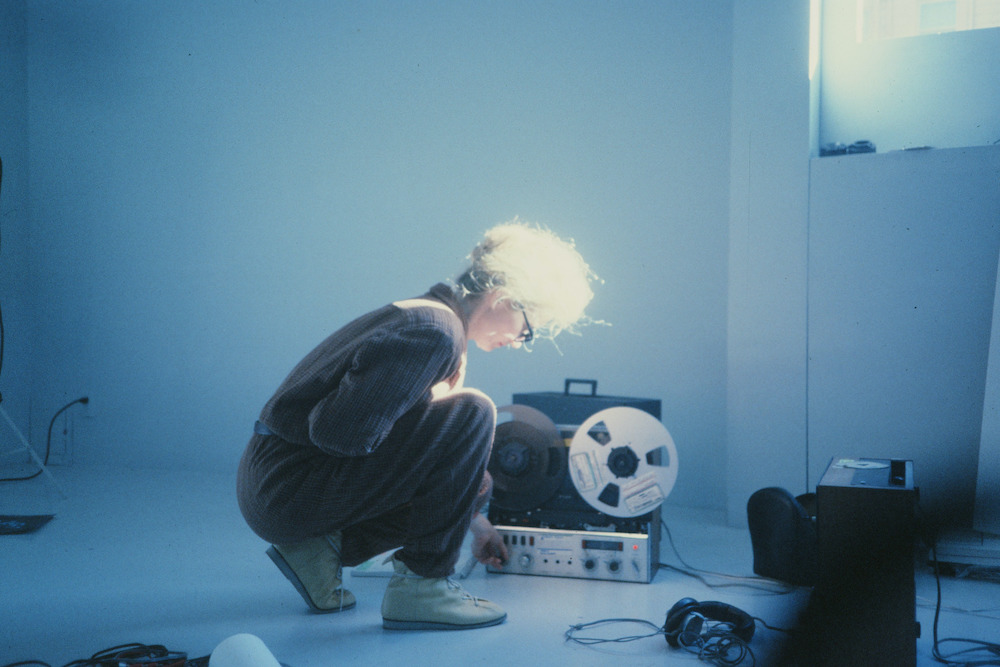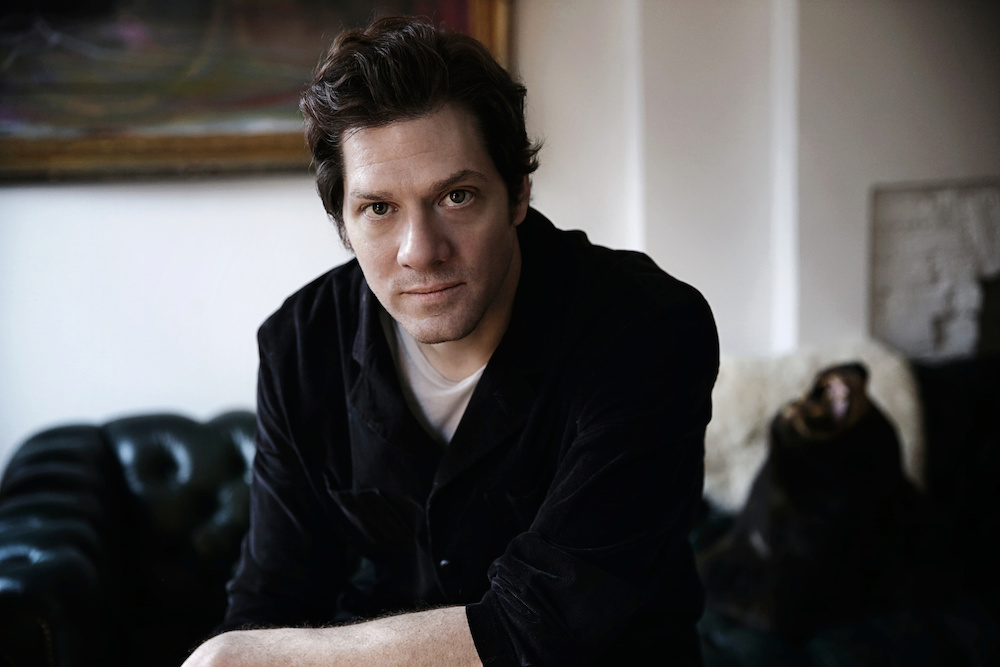
Maryanne Amacher, one of the subjects of Sisters with Transistors. Photo: Peggy Weil. Courtesy of Metrograph Pictures.
Such care is taken with the visual and aural elements of Lisa Rovner’s Sisters with Transistors, a new documentary profiling women composers from the early days of electronic music, that watching it feels more like observing a cinematic poem than a cut-and-dried work of nonfiction. Featuring a voice-over by Laurie Anderson alongside decades’ worth of rare archival footage, the movie examines the careers of ten women—Clara Rockmore, Delia Derbyshire, Daphne Oram, Éliane Radigue, Maryanne Amacher, Bebe Barron, Suzanne Ciani, Pauline Oliveros, Laurie Spiegel, and Wendy Carlos—and the gender disparity that has led to so many of them being overlooked, forgotten, or outright erased from the history of electronic music. The relationship between art, humans, and machines is one I find constantly fascinating, and Sisters with Transistors is filled with moments that explore just that, from an account of how Derbyshire’s early memories of air raid signals in the Blitz influenced her ghostly compositions to video of a bemused Thurston Moore watching Amacher fling her body between stacks of keyboards as she plays in her equipment-stuffed home. Sisters with Transistors is available to stream on Metrograph Digital through May 6. —Rhian Sasseen
If you are a certain kind of obsessive jazz fan and record collector, there is no grail holier than a Mosaic box set. Since the eighties, Mosaic has released lavish limited-edition compilations stuffed with hours and hours of gorgeously remastered music from eras past, available only via direct mail order. The company’s latest offering is The Complete Louis Armstrong Columbia & RCA Victor Studio Sessions 1946–1966, which features two discs’ worth of his singles on the RCA label from just before the LP era, and five more discs that include three of Armstrong’s masterful LPs for Columbia as well as hours of alternate takes and studio conversation. The period represented here was a time when jazz was enthralled with bebop, which created the basic template for almost all jazz since. Many listeners then felt Armstrong was past his prime, a holdover from an earlier time, but as he says in a quote in the deliciously exhaustive booklet that accompanies the set, “I’m playing better now than I’ve ever played in my life.” And with the resources of Columbia Records and new recording technology, he and his bandmates sounded better than ever, too. One of the albums included here, Louis Armstrong Plays W. C. Handy, is in fact one of my favorite jazz albums of all time. It opens with a thundering rendition of “St. Louis Blues” and deepens from there, climaxing with the rollicking “Long Gone (From Bowlin’ Green).” Armstrong sings like the loveliest gravel pit ever to hold a mic; either you hate his voice or you’re certain it’s the best thing ever (I’m in the latter camp), and there’s lots and lots of it here, along with solo after stunning trumpet solo. This sort of box ain’t for everyone, but if it’s for you, I don’t have to convince you of what a treasure it is. —Craig Morgan Teicher
There is a lot of writing online these days. Besides most of my work, the screen plays host to most of my conversations with my colleagues, much of my interaction with friends and family, marketing emails, donation appeals, reliable news, unreliable news, Instagram captions, tweets, recipes, and online journals (like our own Daily). There are also increasing numbers of platforms by which writers, people whose work commands attention and capital in many currencies, can send their words to subscribers either for a fee or for free. Substack is mostly a CSA model of writing or, put another way, an OnlyFans model: you can pay to get content others don’t. The writer Brandon Taylor gives it away—in a manner of speaking. In his Substack newsletter, Sweater Weather, Taylor writes perfect essays with titles such as “not this morality play,” “i read your little internet novels,” “zola was kind of a zaddy, no?,” and “how come these ghosts is white?” Taylor is the author of Real Life, the best novel of 2020 (says me but not only me—it was short-listed for the Booker Prize). He was also a doctoral student in biochemistry at the University of Wisconsin before he became a novelist, and he’s an active Twitter user. In other words, he speaks many languages via many mediums. In Sweater Weather, these languages combine into a solution so beautifully complete that it works on the body like the winter ocean. In “this the country,” Taylor guides the reader—college-tour style, backward and never missing a step—through art criticism, crystalline commentary on race in America, and enormously vulnerable memoir. I read it on my phone. Someday, though, a canny editor will gather these gems and put them in a beautiful hardcover edition, with a Helen Frankenthaler on the cover, and I will pay thirty-five dollars to read them all again, and you will, too. But I recommend you start now. —Julia Berick
I’m big into all things lunar, so I was thrilled to read the first installment of The Moon in Full, Nina MacLaughlin’s new column on the Daily. Every month for the next year, MacLaughlin will publish an essay in advance of the ever-reliable occurrence that is the full moon; this month’s piece is aptly titled “Pink Moon,” which, I learned, is the designation in the Old Farmer’s Almanac for April’s biggest lunar event. It feels like a natural turn, then, to go from reading “Pink Moon” to listening to Nick Drake’s album of the same name. The third and last of Drake’s albums before his death at age twenty-six, Pink Moon is generally pegged as sad, which it is—I won’t argue that. It’s not, say, celebratory or particularly joyous, even if Volkswagen did deem the title track cheerful enough to use in a 1999 commercial. More than sad, though, the album strikes me on this week’s listening as lonely. It’s a sparse, stripped-down series of songs, composed almost exclusively of Drake’s vocals and a single acoustic guitar. The lyrics are so condensed as to approach the cryptic; they suggest a deep turn inward. But I find that there’s a sort of resonance between the stark, solitary nature of Pink Moon and MacLaughlin’s subject matter. Not lonely, perhaps, but always alone, the moon remains solidly singular, perpetually flying solo. —Mira Braneck
When it comes to the performing arts, there really is no substitute for the stage—the dark in the wings, the tactile reverberation of dialogue, the collective energy at curtain call. In the absence of these dramatic signatures, here is a standing ovation for Adam Rapp’s The Sound Inside. The play follows Bella Lee Baird, a middle-aged creative writing professor at Yale, as she deals with a terminal cancer diagnosis and the sudden attention of Christopher Dunn, an ambitious and embittered undergraduate. While the story may have been best told during its Broadway run, the published version by Theatre Communications Group makes for a truly engaging read. I think the page serves these characters well partly because they are writers who address the reader (or audience) with the kind of narrative attention one might expect from a first-person novel—not so much breaking the fourth wall but ignoring it right from the start. Because this play is so much about the written word, it is nice to be able to slow down and lean into the nuances of Rapp’s language. But if you have a hankering for that performative edge, Audible just released a version narrated by the original cast members, Mary-Louise Parker and Will Hochman. Listening on the couch, eyes closed until the end, one could be forgiven for mistaking a lamp in the living room for the raising of houselights. —Christopher Notarnicola
from The Paris Review https://ift.tt/3e5xmL6


Comments
Post a Comment